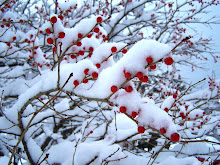Toxics include many different substances that produce negative effects, usually on human health. Knowledge is incomplete with regards to many of these toxics and the control strategies are complex. Toxics include trace metals, synthetic organic compounds (such as DDT), dioxins, and PCB's. The primary toxin of concern in Vermont has been mercury.
The source of half the mercury in the Lake Champlain basin comes from outside the basin via the jetstream and lower level winds. Mercury is a concern in Lake Champlain because it is a toxic that bio-accumulates in individuals as it proceeds up the food chain. Mercury is stored in the fatty tissues of animals and remains indefinately.
The cycle starts when micro-sized planktonic organisms ingest the mercury while they feed on the bottom, and are then eaten by small minnows. Predatory fish like Walleye and Northern Pike, eat many of these small minnows and build up mercury in their own tissues. This is why the State of Vermont has had to post health advisories for childeren and women of childbearing age. Another Lake Champlain food chain that is affected by mercury starts with Myces.
Myces are a freshwater shrimp that feed on the bottom during the day and rise up in the water column at night. When they rise they are fed upon by schools of Rainbow Smelt, who are the number one forage of Lake Trout. This is why the health advisories also pertain to Lake Trout. What if humans are not the ones at the top of the food chain? That's when we find dead loons, herons, osprey, and eagles that test high in mercury.
Besides mercury, there is concern about high levels of manganese and arsenic in Outer Mallets bay. These contaminants settle to the deepest parts of the bay near the Champlain Islands. It is a very protected bay and only real influx of water is from the Lamoille River. The manganese has been attributed to runoff from old talc mines in Johnson, Vermont. The arsenic is believed to have originated from an old lead smelter to the north that regularly vented its pollution over the Lamoille river valley.
Wednesday, April 18, 2007
Subscribe to:
Post Comments (Atom)




No comments:
Post a Comment